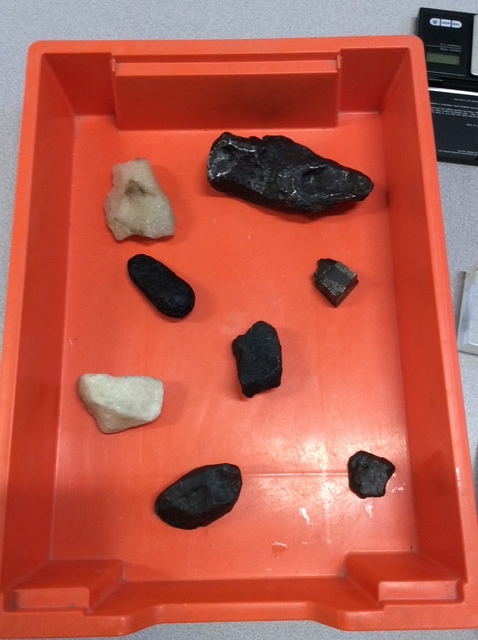Pupils from Rossett Acre Primary School got their hands on rare samples of moon rocks and meteorites last week during a series of science lessons which were truly out of this world.
The children were encouraged to reach for the stars and learn more about the Universe around us during a week-long interactive experience of astronomy.
Each child was given the unique opportunity to touch a piece of space rock not of this Earth as they were allowed to handle some genuine meteorites
These rare samples were provided free of charge by the UK’s Science and Technology Facilities Council (STFC), which provides educational packs in a bid to inspire young people to get involved in science and complement classroom studies.
The pack provided by STFC includes a 1.2 billion-year-old piece of Mars rock and a 4.3 billion-year-old nickel meteorite. It is unlikely that these children will ever get the chance to hold an object older than this, as Earth itself was formed 4.6 billion years ago.
The lunar samples were collected in the late 1960s and early 1970s during some of NASA’s first manned space missions to the Moon. During these missions, a staggering 382kg of material was brought back to Earth, mostly for use by scientists, but small quantities are used to develop educational packs like this one.
Headteacher at Rossett Acre Primary School, Mrs Corrine Penhale, said:
This was such an exciting opportunity for our school, and it was fantastic to see the children so interested and engaged in learning all about the Universe. These samples are incredibly rare and valuable so it was an amazing opportunity for the pupils which will have created lasting memories for us all. Our thanks go to STEC for making this possible.
STFC’s Executive Chair, Professor Mark Thomson, said:
We are thrilled to be able to offer this unique opportunity to young people. It is not often they will be able to see close-up, and actually touch, such important fragments of science history. Samples like these are vital in teaching us more about our solar system, allowing us to confront theory with fact. We hope this experience will encourage the pupils to take up a career in science.”











